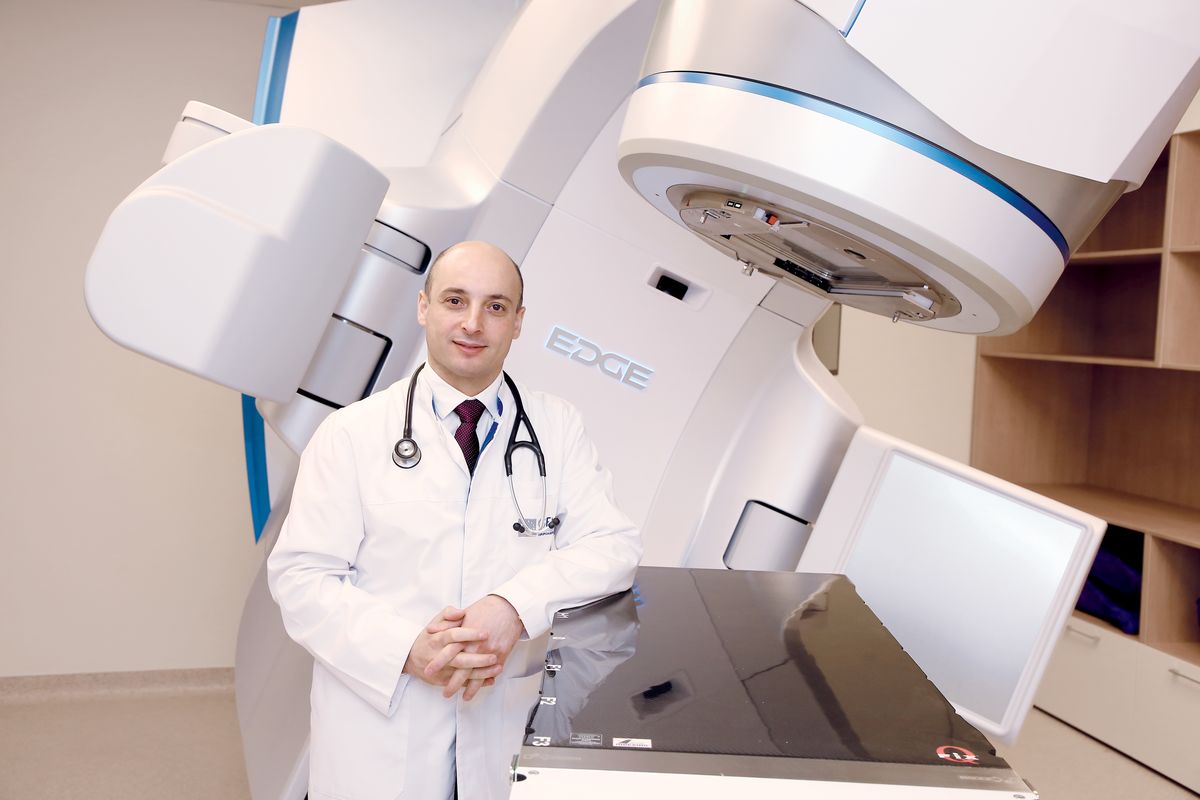Nidal Salim, head of the Department of Radiation Therapy at the European Medical Center (EMC), talks about the cases in which radiation therapy is necessary, how the possibilities of treating oncological diseases, including stage 4 cancer, have changed.
 Before moving to Russia, Dr. Nidal Salim worked in the oncology department of the Israeli Hadassah Clinic, then headed the radiation therapy department he created at the Augusta Victoria Hospital in Jerusalem. In 2012, he accepted an offer to come to Moscow to create a radiation therapy center that has no analogues in the country. Under his leadership, the center introduced the latest methods of radiation therapy and radiosurgical treatment for the treatment of adults and children.
Before moving to Russia, Dr. Nidal Salim worked in the oncology department of the Israeli Hadassah Clinic, then headed the radiation therapy department he created at the Augusta Victoria Hospital in Jerusalem. In 2012, he accepted an offer to come to Moscow to create a radiation therapy center that has no analogues in the country. Under his leadership, the center introduced the latest methods of radiation therapy and radiosurgical treatment for the treatment of adults and children.
When do I need radiation therapy?
According to current data, from 60 to 80% of patients with cancer require radiation therapy at one stage or another of their treatment. It can be used both independently and in combination with surgery and chemotherapy. Treatment is performed on an outpatient basis. A visit to the clinic takes an average of 15-20 minutes, after which you can return to your daily routine.
Modern techniques such as stereotactic radiosurgery (SBRT) — that is, the use of high doses of radiation aimed precisely at the pathological focus — make it possible to treat patients who were previously considered "hopeless." With the help of radiosurgery, we can treat tumors that cannot be surgically removed, located close to vital organs and structures, including tumors of the brain, spine, lungs, liver, prostate, etc.
Today, there is more and more evidence that stereotactic radiosurgery can be no less effective than surgical treatment in some diseases, such as first-stage lung cancer. Photo: Forbes.
Why is radiation therapy becoming safer and more effective?
Technology is developing very fast. Modern linear accelerators make it possible to carry out treatment with submillimeter accuracy, track the slightest deviations in the position of the tumor during treatment and respond to them. At the same time, healthy tissues are protected as much as possible. If, for example, a tumor is located in the lungs, its position changes during respiration. The system monitors these changes to direct the beams directly at the target.
EMC has Russia's only Varian EDGE radiation therapy and radiosurgery system, which is currently one of the most powerful and accurate systems in the world, and can be used to treat tumors of the most complex locations. With its help, we can also irradiate multiple metastases during one session.
How radiation therapy helps preserve an organ and its functions
 There are many examples of how radiation therapy helps preserve organ functions and improve the quality of life of patients. For example, in rectal cancer, radiation therapy before surgery can reduce the tumor and perform more gentle surgical treatment without forming a colostomy. Another example is tumors of the head and neck. Previously, they were treated only surgically. With a third-stage laryngeal tumor, the organ had to be completely removed to form a permanent tracheostomy. This operation is psychologically difficult for patients. They are deprived of the possibility of conversational speech and full-fledged communication. Modern radiation therapy allows you to avoid surgery and recover with a minimum of side effects.
There are many examples of how radiation therapy helps preserve organ functions and improve the quality of life of patients. For example, in rectal cancer, radiation therapy before surgery can reduce the tumor and perform more gentle surgical treatment without forming a colostomy. Another example is tumors of the head and neck. Previously, they were treated only surgically. With a third-stage laryngeal tumor, the organ had to be completely removed to form a permanent tracheostomy. This operation is psychologically difficult for patients. They are deprived of the possibility of conversational speech and full-fledged communication. Modern radiation therapy allows you to avoid surgery and recover with a minimum of side effects.
A unique treatment method for recurrent brain tumors
Together with specialists from the EMC Neurosurgical Clinic, we have implemented a unique technique for intraoperative irradiation of recurrent glioblastomas, malignant brain tumors, which has significantly prolonged the life of patients with this diagnosis. Intraoperative radiation therapy is also used to treat skin cancer, primary tumors of the breast, prostate and other localizations.
Radiation therapy to relieve pain and other symptoms
In addition to the main treatment method, radiation therapy is used to improve the quality of life of a patient with an incurable disease. For example, if the metastasis presses on the esophagus, which greatly complicates the function of swallowing. A person could live for another six months, but due to metastasis, they can die within a month. In this case, radiation therapy reduces the size of the formation and opens the esophagus. Or, for example, if a metastasis presses on the spinal cord, a person stops walking. By irradiating malignant tumors in the spinal cord or spine, we can preserve the patient's ability to move. In such cases, radiation therapy provides a chance for a longer life and reduces pain.
About the treatment of stage 4 cancer
Until recently, the fourth stage of cancer included diseases with any number of distant metastases. But today there are several subgroups of the fourth stage. It has been proven that if a patient has up to six single distant metastases, they can be irradiated, thereby significantly prolonging his life. We cannot say that a person will fully recover, but we monitor his condition, sometimes for a very long time. A person can live for several years with high quality. Today, thanks to the development of radiation therapy and the emergence of new highly effective drugs, we have more and more opportunities to help patients in the most difficult cases.









.webp)
















